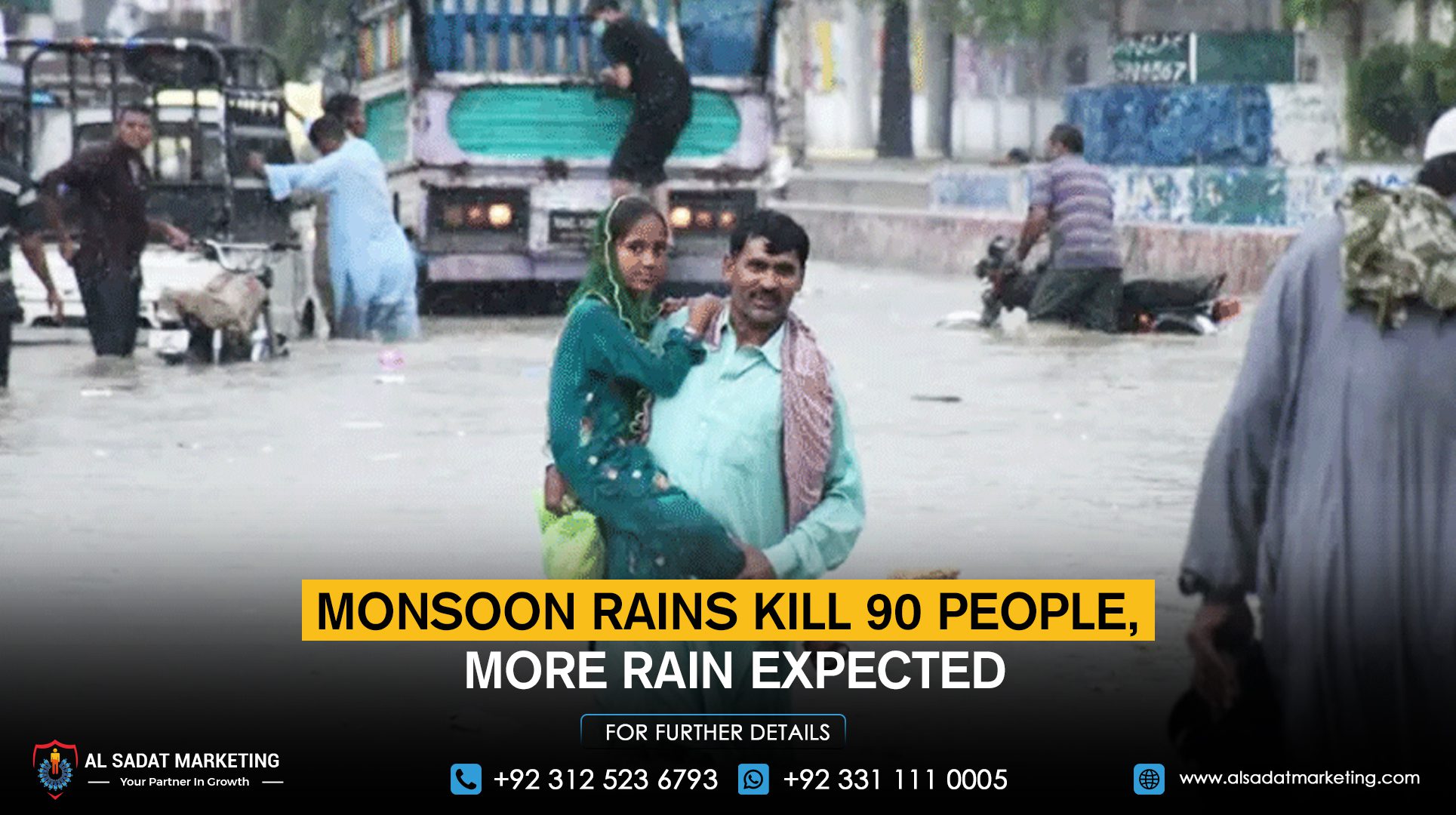Since June 26, severe monsoon rains and flash floods have killed at least 90 people and injured 158 more in Pakistan, officials announced on Saturday.
It is anticipated that the current trend, which experts say is being exacerbated by unregulated urbanisation and rapid environmental changes, will last far into August.
Rising temperatures, urban heat islands, and shifts in local weather dynamics are all contributing to the exceptionally high rainfall, according to Irfan Virk, Deputy Director at the Pakistan Meteorological Department.
“As your urban areas grow, there is more concrete and less tree cover,” Virk stated. Temperatures rise as a result. More intense rainfall occurs when cold air and high humidity combine in these circumstances.
Rainfall is expected to continue in several areas of the nation until at least July 17, according to the Meteorological Department. Khyber Pakhtunkhwa, Kashmir, upper and central Punjab, and northeastern Balochistan are among the areas that are anticipated to get rainfall. Additionally, monsoon activity is predicted to continue into August, with overcast weather expected across much of the nation.
The NDMA warns of flooding in South Punjab.
A flood notice has been issued by the National Disaster Management Authority (NDMA) for a number of South Punjabi districts, alerting locals to the possibility of flash floods and urging them to exercise caution.
Areas like Bela, Multan, Muzaffargarh, Zahirpir, Mithankot, Rajanpur, Liaquatpur, Khanpur, and Alipur are at high risk of flash floods due to heavy rains, according to an NDMA spokeswoman.
The divisions of Bahawalpur, Dera Ghazi Khan, Jalalpur Peerwala, and Ahmedpur Sharqia have also recorded torrential rains.
At Nisab station in Muzaffargarh, the most rainfall that has been recorded to date is 40 mm. Rain and windstorms are also predicted to persist in areas of Cholistan, Multan, and Bahawalpur divisions.
To reduce the risk of severe winds and lightning, the NDMA has advised residents to avoid low-lying regions and riverbanks and to take cover in secure areas.
Effects on the environment
The increasing influence of climate change has been connected by experts to the increased rains. One of the main causes of the unpredictable weather patterns has been identified as the urban heat island effect, which is brought on by growing urbanisation, dwindling greenery, and large concrete buildings.
According to Virk, “smaller towns and villages with more natural vegetation are less affected.” “However, the local climate has changed considerably in major cities where concrete has replaced greenery, resulting in more heat and, as a result, heavier rainfall during the monsoon season.”










